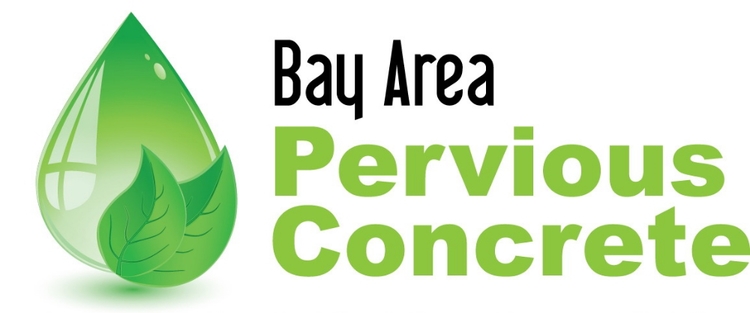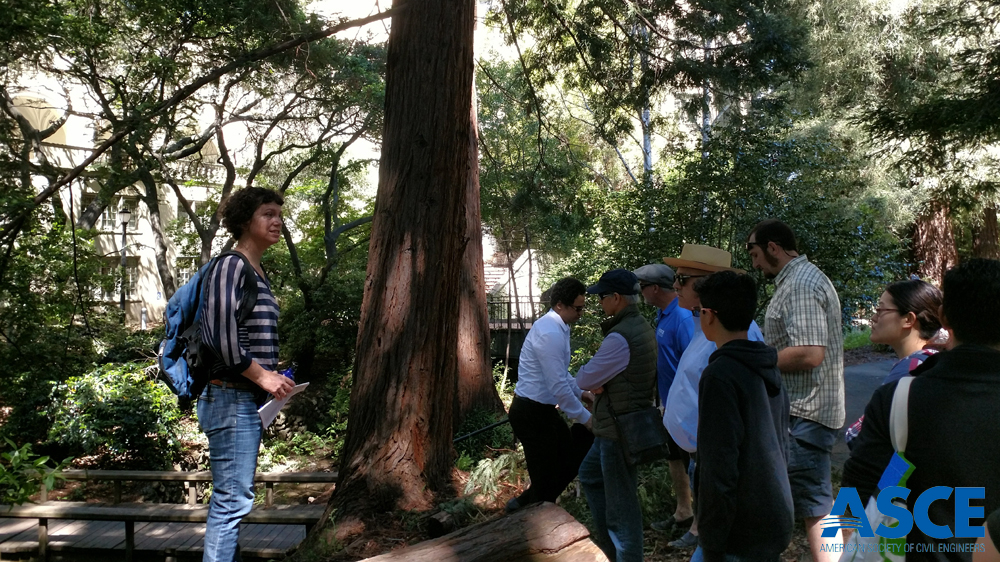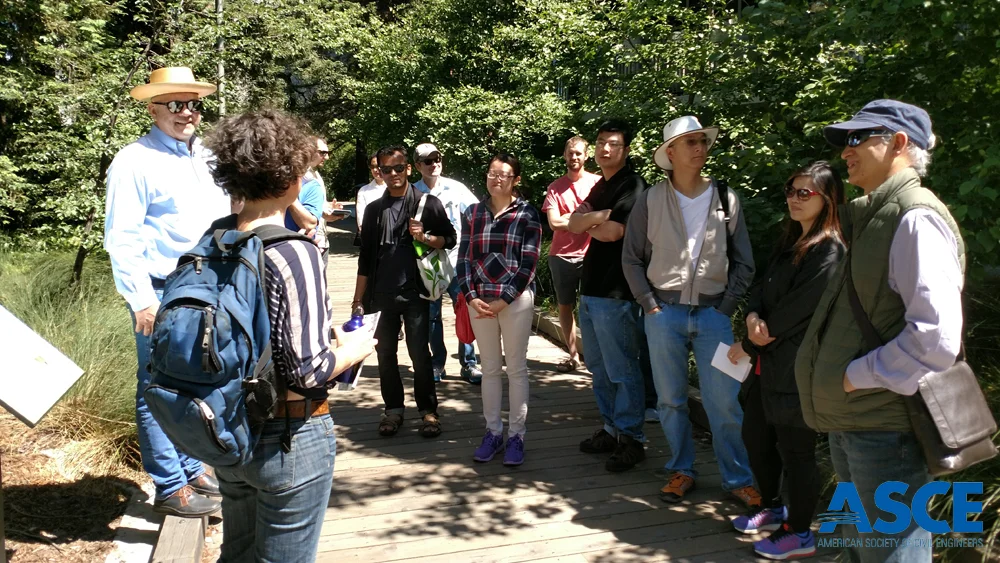Sonja O'Claire, our Director of Marketing, also volunteers her time as a committee member on the ASCE SF Chapter's Sustainability Committee. One of the activities of the committee is to coordinate local tours that highlight sustainable design. For the initial tour of 2017 the committee arranged for a green infrastructure tour of the University of California Berkeley (UCB) campus. On a beautiful Saturday, their guide, Aysha Massell, an Environmental Specialist for the Office of Environmental, Health, and Safety at UCB, walked attendees through the campus showing all of the different past, and present, green infrastructure projects that are on the campus.
ASCE SF Section Sustainability Committee and their guests on the UCB tour.
Such a beautiful day for a walking tour!
In 2013 UCB was issued its own MS4 stormwater permit, separate from the city of Berkeley. One of the major requirements of the stormwater permit is to prevent pollutants generated by UC Berkeley operations and activities from entering the storm drain system through the implementation of Best Management Practices (BMPs). Since then the university has tried a variety of BMPs to manage its stormwater and restore habitat. All of the projects have provided learning opportunities for students and staff, and act as demonstration models for the public.
Picturesque UCB Campus
Aysha took the group on a tour that showed the university's progression from the first green infrastructure project to the most recent project. The photos below provide a summary of the tour.
First stop on the tour one of the first designed bioretention areas
The initial attempt at a rain garden provided a lot of learning opportunities for staff on both site selection and design. This area has a lot of pine needle debris, which keeps the maintenance for the landscapers down by inhibiting other plant growth, but limits the amount of treatment provided. Not shown in this picture is an old cobblestone gutter, that sits between the rain garden and the adjacent building's walkway, preventing stormwater from the building's walkway to get treated by the rain garden.
A newer rain garden at UCB
UCB has greatly improved upon their process of selecting and designing their rain gardens and bioretention areas. This is a newer area that has been converted into a bioretention area with more natural landscaping. A sign educates the public and describes how the water is allowed to infiltrate prior to being sent to Strawberry Creek.
Not just a grassy bioretention area, but actually a green roof for the below-ground building!
The tour didn't have to climb to reach this green roof at Bechtel Engineering Center. Walking by you couldn't even tell it was a green roof since this portion of the building is below ground.
An permeable pavement bike parking area
This bike parking area was an attempt at a form of permeable paving. It was a very uneven surface, with the gravel being spread all over the place, and not sitting flush with the concrete bumps.
BAPC's Polished pervious concrete walkway is still looking and performing well.
Eventually the tour reached the Melvin Calvin Laboratory where Bay Area Pervious Concrete had installed a Polished pervious concrete walkway back in 2013. Since Aysha had not known about the walkway Sonja took the opportunity to provide an impromptu presentation and demonstration of pervious concrete for tour attendees. Even after years of cedar tree debris falling onto the walkway the pervious concrete was still performing well.
One of the latest on-going projects is the Strawberry Creek restoration and daylighting at UCB
The longest project that UCB is undertaking is the Strawberry Creek restoration project. Strawberry Creek runs through the whole campus, so it involves multiple phases and individual projects along its entire length. some of the projects are repairing or fixing check dams along the creek to help mitigate storm surges. Others are focused on reestablishing native landscaping to prevent erosion and habitat for wildlife. Green infrastructure projects campus wide are designed to reduce the amount of untreated stormwater that is entering Strawberry Creek.
Lower Sproul Rain Garden
Greywater system's cisterns located under the Lower Sproul Plaza
Diagram of the greywater system installed under Lower Sproul Plaza - Click to Enlarge
One of the more larger and more complicated projects UCB undertook was the greywater system that provides water for the toilets at the new Eshleman Hall. Rain water is collected from the hall's roof and the Lower Sproul Plaza into an underground cistern. The water is treated and then pumped back into the hall to be used for flushing toilets. Should there be too much rain for the cistern to handle the system was designed to overflow into a rain garden located just northwest of the plaza. This project too had learning opportunities. For one, the placement of the filters for the cistern and treatment plant were not ideal for maintenance to be able to easily access them. Another was that the outflow system was not installed properly so they have had some flow issues between the cistern and the rain garden.
With so many different types of BMPs represented on the UCB campus it was overall a fantastic tour! Look forward to the next in this blog series of green infrastructure tours - The California Academy of Sciences!
Want to learn more or join the ASCE Sustainability Committee? Contact us!










